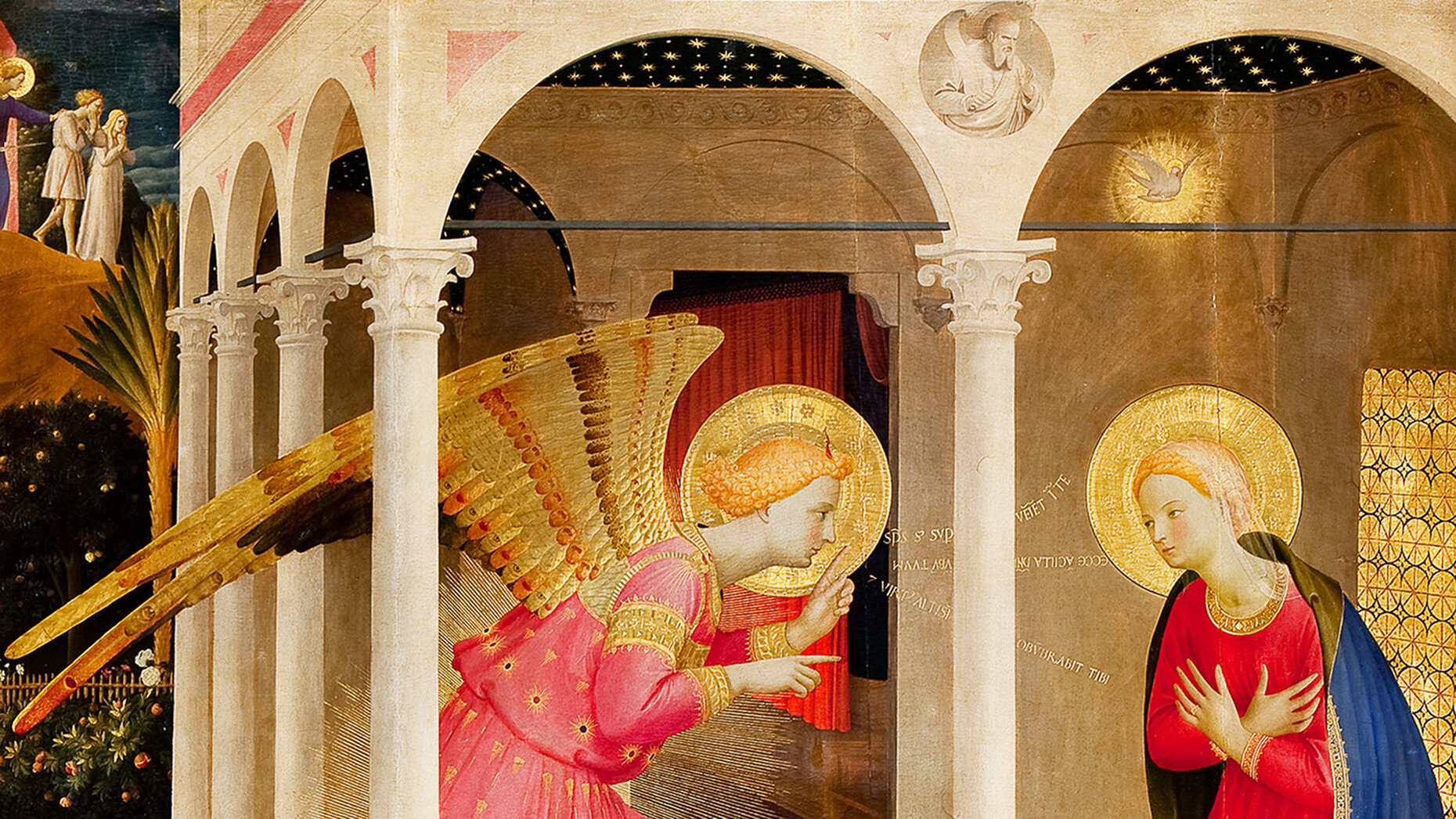
Inspiratie
Gold symbolizes the divine light
The age-old icons form a connection between God and man and are as old as Christianity. The golden background symbolizes the divine light. The halo of gold indicated that the person depicted is holy.
See the wonderful work of Fra Angelico, Mysticism and Beauty (Annunciation, tempera on wood Diocesan Museum of Cortona, IT) dating back to 1434. The artist was a monk with his own special vision of beauty, the harmony between people, things and nature filtered in beautiful light. But also spoken poetry, this combination was exceptional for the heavily religious age of late medieval religiosity.
The new nude
Classical masters had developed a canon with guidelines for beauty and grace. The perfect dimensions of the body and the proportions of the limbs were described herein. Classical sculptors used these guidelines for the famous Greek statues and Roman tombs. The canon was lost in the Middle Ages. Artists also stopped painting and sculpting from nude models or anatomical studies. In addition, there was a great taboo on female nude.

Botticelli puts female nude on the canvas in all its glory
Before the Renaissance, most visual art was religious in nature and the church was the largest commissioner. Paintings were largely portraits. Botticelli also mainly produced devotional paintings. Around 1486 he made another painting of a beautiful, graceful but above all naked woman for the first time in 1000 years. Botticelli clearly made use of anatomical studies for the body of Venus. He has also incorporated the ideal dimensions from the Classic canon. He changed the way of painting forever and has been an inspiration to many artists ever since.
His paintings The Birth of Venus, see above, and Spring (La primavera) are masterpieces by his hand. A large and valuable collection of Italian painters can be seen in the Uffizi Gallery, Florance.
The three Graces from Spring (La primavera), called Aglaia, Euprosyne and Thalia, the three female figures to the left of Venus, reinforce the position of Venus in the scene. They are the personification of charm, harmony, feminine beauty and serenity.

Michelangelo
Michelangelo was versatile, as was expected of an "uomo universale" of the Italian Renaissance: he drew, wrote and painted, but he was above all a legendary sculptor. Alongside his rival Leonardo da Vinci and the younger artist Raphael, he is considered one of the most important and influential artists of the Italian High Renaissance period. Making sculptures was a tantalizing struggle for Michelangelo, in which he strived for perfection. He wanted to arrive at the purest, virtually unattainable, form. This manifests itself in a battle between mind and matter. This battle can be felt in his images, which seem to be characterized by an almost tormented tension. Even figures at rest have a muscle tone, which indicates inner turmoil.
His patrons were mainly the Pope, who commissioned, among other things, the famous statue of David, and later the ambitious commission to paint the ceiling of the Sistine Chapel in the Vatican, Rome (see above).
Michelangelo who developed their own 'maniera' manners characterize the last phase of the Renaissance, they were called Mannerists and they tried to adapt the art of classical antiquity to their own insight. For example, the frescoes in Michelangelo's Sistine Chapel are characterized by the muscular bodies and intricate postures of human figures depicted. The natural anatomy and proportion theory in the representation of human figures is more or less abandoned. In addition to applying body deformations and exaggerated perspective, various artists experimented with bright, bright colors and exaggerated color contrasts.
Michelangelo took a risk, he dared to depict God himself in the creation of Adam. This was unprecedented in the Renaissance! Thanks to the Sistine Chapel, Michelangelo is not only seen as a brilliant sculptor, but also as a great painter.


